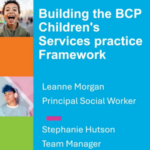The House of Commons’ public accounts committee reports that the Department of Work and Pensions (DWP) has closed down hundreds of local offices and replaced them with call centres, giving the public at least 55 different phone numbers to choose from. In the year 2004-5, 21 million calls went unanswered – 44 per cent of all calls made. Only 21 per cent of calls to the disability living allowance and attendance allowance helplines were answered.
Each of these figures highlights frustrating problems for disabled people, their families and older people.
Firstly, time and money. A phone call to the DWP is never short – unless you’ve called the wrong number. Do this, and they probably won’t be able to transfer you to the right office, which means making at least one more call, and time spent in another queue. On a tight budget, you can almost hear the cost of the call mounting up. I’ve had to give the same information to three different offices (about permitted earnings) in the same month.
It’s demoralising: gear yourself up to explain your situation to a total stranger, fully expecting to be misunderstood, but your call has less than a 50/50 chance of being answered. Even if you do manage to speak to a human, there’s no guarantee that they will understand clearly enough to be helpful. When the DWP allowed face-to-face interviews, you could tell if the interviewer understood from their facial expression.
Worst of all, the levels of stress the system generates. Communicating by phone means that people don’t have any record of what they were told, or even who they spoke to, which makes it harder to challenge decisions made. Claimants are told to report any changes in their circumstances immediately, but we know that the DWP’s first action is to stop payments until any changes have been calculated. The effect of this, for people living hand-tomouth, can be catastrophic, which is why they are often reluctant to tell the authorities about changes in their lives.
Benefits are meant to be this society’s safety net. Sometimes it feels more like walking a tightrope.
The Simon Heng Column
November 27, 2006 in Community Care
More from Community Care
Related articles:
Job of the week
Employer Profiles
Workforce Insights
 Harnessing social work values to shape your career pathway
Harnessing social work values to shape your career pathway  Would you move from the city to work in a more rural setting?
Would you move from the city to work in a more rural setting?  Webinar: building a practice framework with the influence of practitioner voice
Webinar: building a practice framework with the influence of practitioner voice  ‘They don’t have to retell their story’: building long-lasting relationships with children and young people
‘They don’t have to retell their story’: building long-lasting relationships with children and young people  Podcast: returning to social work after becoming a first-time parent
Podcast: returning to social work after becoming a first-time parent  How managers are inspiring social workers to progress in their careers
How managers are inspiring social workers to progress in their careers  Workforce Insights – showcasing a selection of the sector’s top recruiters
Workforce Insights – showcasing a selection of the sector’s top recruiters



 Bournemouth, Christchurch and Poole
Bournemouth, Christchurch and Poole  Oxfordshire County Council
Oxfordshire County Council  South Gloucestershire Council
South Gloucestershire Council  Wokingham Borough Council
Wokingham Borough Council  Free CPD on Parkinson’s for health and social care staff
Free CPD on Parkinson’s for health and social care staff 

 Facebook
Facebook X
X LinkedIn
LinkedIn Instagram
Instagram
Comments are closed.